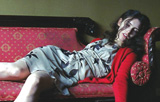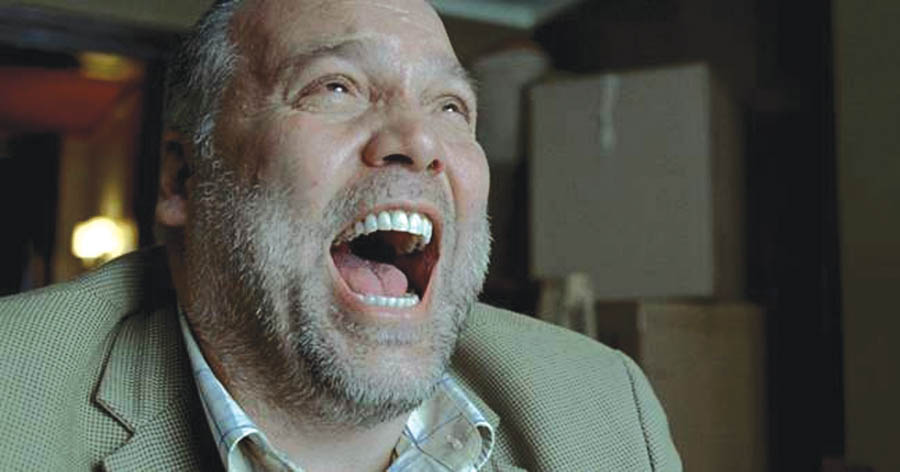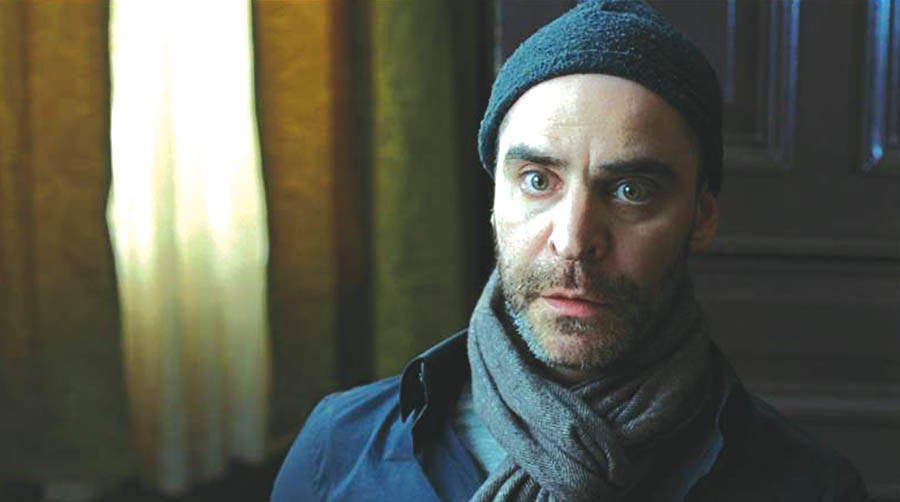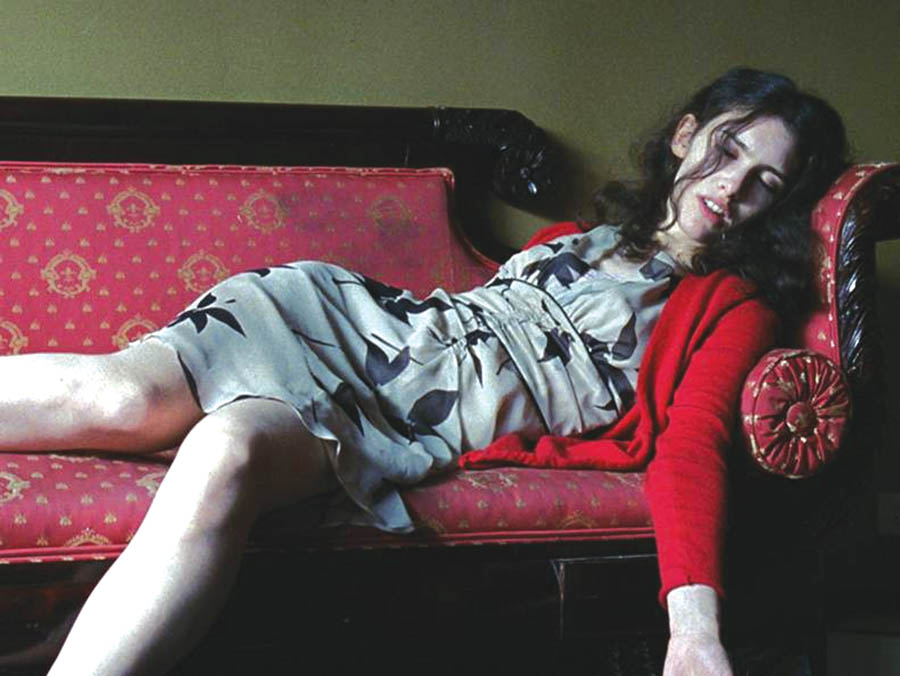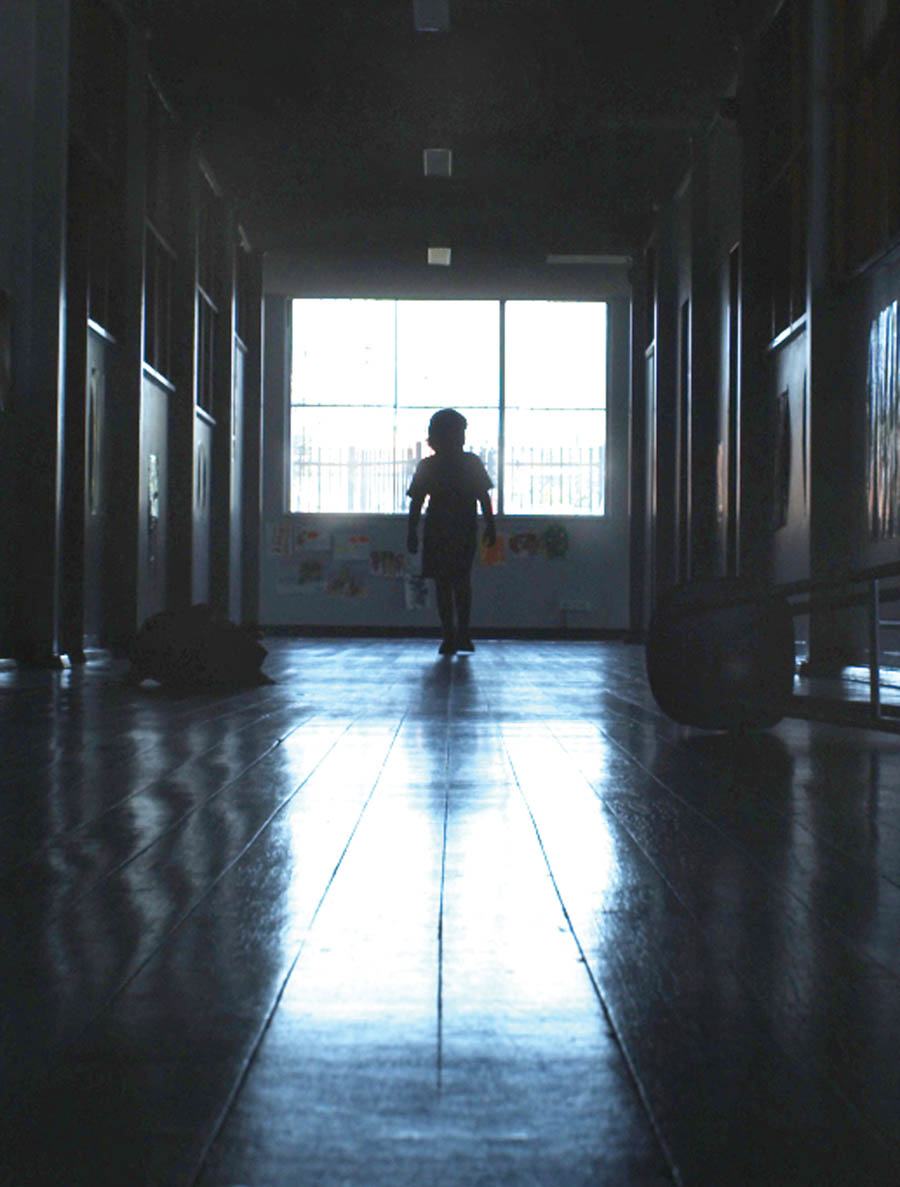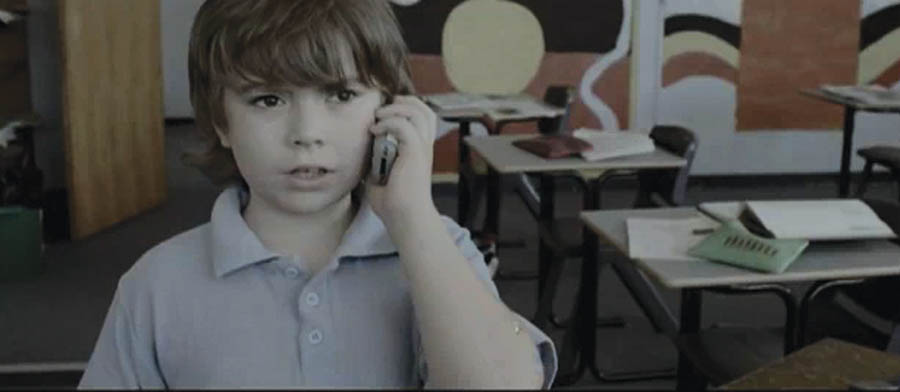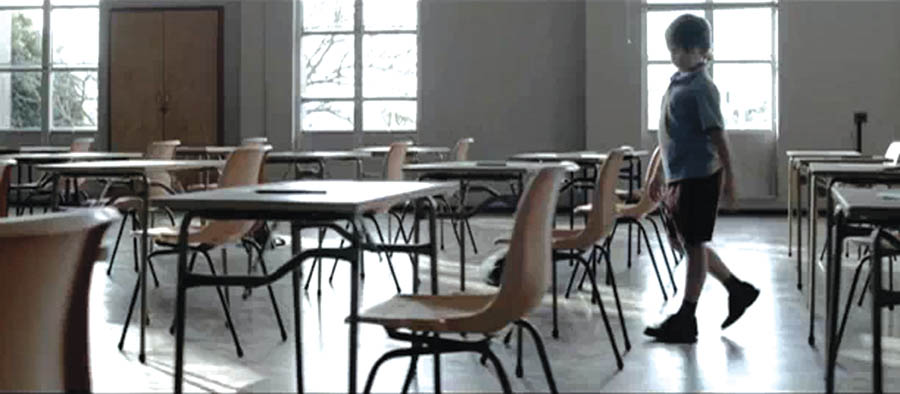| The two productions were handled differently from the outset, but both received close attention during post production. ‘The New Tenants’ was shot on 35mm film and DPX files were scanned at 2048x1556, or 2K, for the DI and colour grade. ‘Miracle Fish’ was shot on the RED camera.
THE NEW TENANTS
After the scan, Colourist Jean-Clement Soret at MPC carried out the grade on a DaVinci Resolve system. “I've worked on older systems like Pandora's Pogle, on Quantel's IQ and Da Vinci Resolve. For a film it is essential to work on a conformed edit, so the non linear workflow was the obvious choice. I like Resolve because it is very intuitive, and the colour process is very clean and filmic.”
Although this film runs for just 20 minutes, the shoot extended over several days and the mood changes from comedy to very scary to romance fairly quickly. To sort out what he should be aiming to achieve in the grade, Jean-Clement held some preliminary talks with the Director Joachim Back, and then they went through a period of trial and error before reaching what Joachim liked. ”The biggest challenges,” he said, “were not spoiling the film with a heavy hand, and trying to match up shots that were filmed over several days. But, just changing a few details like skin tones or little pools of colour helped to go from one atmosphere to another with subtlety.”
Focussed on Faces
The film also includes many close-ups on faces, which Jean-Clement says are the often the hardest elements to control in a grade. “There is a very fine line between correcting skin tones just enough and correcting too much, which looks manipulated. Differences in skin tones are the first thing people notice from shot to shot.”
The New Tenants’ was filmed on location in New York in the Hotel Chelsea which in fact has a brown, rather gloomy interior. Nevertheless, the frames are full of warm, slightly glowing colours. JeanClement said his job was more about colour or photography enhancement than colour correction. “Paying attention to small details like highlight glow instead of hard white clipping makes a big difference. Controlling highly saturated areas always looks more ‘grown up’. I didn’t use a lot of tracking and keying. Although making sure the faces and the eyes were right was a priority, most of it was done in camera anyway.”
Icing On The Cake
Regarding DP Pawel Edelman’s cinematography, Jean-Clement liked being able to concentrate on details. There was only one setup, and the filming was paced slowly, almost as a series of stills. It had to be very refined and appropriate, and had a completely different dynamic than some of his previous projects. “On ‘Slumdog Millionaire’, for instance, you’re dealing with thousands of cuts and rough, gritty images. When you see great cinematography with a strong intention, you can only respect it and just do that little bit of icing on the cake.”
Jean-Clement has also graded some of commercial work Joachim has done. He said, “Joachim is very precise in his demands, although he always ask you what you think, as a colourist. He likes what looks natural but also likes what is special. With so many tools available now for the colourist, it is tempting to overdo things but it is essential to concentrate on what helps the story and the vision of the director.”
Gunshot
SMNY completed all the finishing for ‘The New Tenants’ including conforming the film, creating titles and credits, and FX shots. Sam Caine was selected to work on the project as Lead VFX Artist, but didn’t actually meet Joachim Back until he began working on the film. “We re-racked and stabilized a lot of shots,” said Sam, “and did a few split-screen comps. The heaviest visual effect was the gunshot scene, which consisted of combining two plates and building out an explosion over actor Kevin Corrigan’s body. I did the online for the film and all the visual effects with the help of my assistant Ross Vincent. We worked on the film for about a month, on and off between other jobs but I did have to pull one all-nighter to get it done in time. ”Although we cleaned up every shot in the film and a lot of the shots required repositioning, the most work-intensive shot in the film was the gunshot scene. Not only was it the most challenging shot in the project but it was also a very important part of the story. It snapped the audience to attention and set the tone for the rest of the movie.
New Challenge
Sam was given two different plates to combine. The first plate consisted of the actual shotgun blast and the smoke. The second plate consisted of the crevice left by the shotgun blast and the light emanating through the doorway. Because Kevin Corrigan appeared in both shots, he needed to remove him from one and rebuild the portion that overlapped to create a clean plate for comping him back into the scene. He then expanded the explosion and built out the smoke and light so it would engulf Kevin's body and the shotgun. This cemented the plates together and gave realism to the shot.
Sam’s team did the conform and all the visual effects for this project on Flame, and he also used Genarts Sapphire plug-ins to achieve the desired aesthetic.
Working on a film, short or long form, was in itself not typical work for Sam. “Traditionally, I work on commercials and music videos so working on a 20-minute long format project was a new experience for me. The film required a different workflow. Unlike a traditional commercial workflow, the film’s grade was not embedded into the footage. Instead, we had to apply an LUT provided by MPC where the colour grade was done, to see the actual colour spectrum we were working with. Also, due to the length of the movie, I had to be very precise about everything I did because rendering out the effects was very time consuming. The schedule didn’t allot time for re-rendering elements.
Flame Experience
“I wouldn’t have been able to feel confident working on this film had I not been working on commercials for the previous four years. When you work on Flame, you’re constantly building on your knowledge from past experience. Your experience at creative problem solving helps guide your vision, and your knowledge of the software helps you make decisions about how to execute it.
“I’ve assisted on a few other short films for Glamour magazine, one of which was directed by Rita Wilson called ‘The Trap’. However, this was my first film as lead visual effects artist. I was really thrilled to work on ‘The New Tenants’ with Park Pictures, the Whitehouse and Joachim Back. Since the film I've had the opportunity to work on a few other commercial projects with Joachim and I really look forward to working with him again in the future.”
MIRACLE FISH
Seth Larney of Sydney’s Chaotic Post supervised the post-production for Miracle Fish, establishing a 4K workflow for the RED ONE footage and metadata that started with fusing the time-of-day and edge time-code from the RED RAW files into the AVID suite
“Timecode is an issue that is often overlooked by productions,” Seth said. “Generally, a project is edited with a low resolution version of the camera footage, the offline. When an offline edit is completed, the editorial department sends an EDL to the finishing department to recreate the project in the online. The online is a version of the completed edit, but in the same high resolution master footage format as shot by the camera. The EDL uses time-of-day timecode and REEL IDs in order to find all the parts to include in the edit. If that timecode does not exist in the AVID when the edit is performed, then it is not possible to perform the online.
Digital Workflows
“This is the same for both film workflows and digital workflows. So for a 35mm film workflow, for example, some of the terminology and steps are slightly different but the concept is identical. In fact, the digital workflow steps stem from a film workflow, so that people used to working with film don't need to change their working methods in order to use digital technologies. They edit in exactly the same way, and we just make everything fit together.”
Part of Chaotic’s job is designing a workflow for this to happen no matter what the client shoots on, or cuts on. With ‘Miracle Fish’, this involved taking the metadata – the timecode - from inside the R3D files that the RED records and using an ALE, AVID Log Exchange, to import that metadata into the AVID. This was then linked to the low resolution clips that had been imported and the result was low resolution footage that matched back to the RED R3D files precisely, with timecode and also with REEL IDs.
The director, Luke Doolan, was then able to edit just as he would any other film and at the end they recreated the edit in the SCRATCH suite with the master RED footage and went into the rest of the post pipeline from there. They also always burn the timecode visually into the frame of the offline files so that if anything goes awry with the timecode in the AVID, they still have the ability to match the conform by eye. Seth explained that this is an important step, as it enables them to stay in control throughout the post process.
Virtual Camera Moves
“One of the greatest advantages of finishing RED footage with SCRATCH in particular is the ability to access RED’s massive 4K of data, in real time, all the way through the post pipeline. Because the RED's resolution is four times the size of a 1920x1080 HD frame, you can zoom in and reframe shots in post that you might otherwise have been locked into. This process gives both the Director and the DP freedom in post to not only tweak framing for creative purposes but also to perform keyframed reframing.
“We can animate the reframing over time to create 'virtual camera moves' in post,” Seth explained. “Because a Director only has a small amount of time on set to get the shots he or she needs, we can refine those shots in post to get the best result possible for the film. In ‘Miracle Fish’, the film is shot almost entirely on Steadicam, but in post we were able to create lengthy flowing shots that may not have been possible to capture any other way. All of these changes contribute to the dramatic effect of the film. When handled properly, it is simply another tool that can help filmmakers achieve their creative goals.”
VFX and Titles
Although Chaotic has an in-house designer Gareth Davies who performs most of their graphic design work, Seth created the animated title for the film and the design of the closing credits. This type of work is typically treated as a VFX shot and then laid back into the film in the online.
When the online is performed, Seth renders out a high resolution 'plate' shot for each shot that needs VFX work. “For ‘Miracle Fish’, we then sent these plate shots over to Mike Seymour at FXPHD along with timecode data to track the in and out points of each shot. When his team were finished with the shots, they sent them back and we laid them into the online inside of SCRATCH. Later, I supervised another round of VFX shots because we decided to add some more elements to the film. This process was the same, just handled internally.”
SCRATCH's project management abilities allow it to track versions of shots as they come in. For instance, in a project where four or five versions of a particular shot might come in from VFX, they can drop the new version in and the old versions all stay close to hand throughout the whole pipeline. “This means if we want to compare versions of shots, or maybe just go back to an earlier version, they are all there, at our fingertips. This works the same for versions of the grade as well,” Seth said.
Uncompressed
At Chaotic all projects are finished to either 2K DPX or 1080P uncompressed DPX image sequences. They will only render to uncompressed files. Seth said that this avoids losing information during the post process, resulting in a high quality image for all projects, and this high resolution DPX sequence then becomes their digital picture master. “From the digital master we can make film prints, playout HDCAM or HDCAM SR masters, make Blu-Rays and make DCP packages. From this we can also render an SD master. From the SD master we can create digibeta masters, DVDs and web deliverables.
“One of the philosophies we base our projects on is outputting the best quality visuals physically possible. It’s the first priority, and all of our pipelines are built around this concept, which flows through from rendering only uncompressed video facility-wide, to developing customized DVD and DCP encoding pipelines in order to squeeze as much quality as possible out of every deliverable that we put out. Being able to do this while keeping costs economical for the people that work with us is our constant mission.
Digital Cinema Packages
Chaotic is one of only a handful of companies in Australia to offer Digital Cinema Packages. DCPs can vary in quality depending on how they are made, and so Chaotic tested several techniques and developed a proprietary pipeline that allows them to keep tight control of the quality. “Among other many other elements, this includes providing 5.1 channel pitch corrected audio for projects that are slowed down to the DCPs specification of 24fps, from 25fps PAL projects. Where pitch correction may not be part of a typical DCP service, we’ve found that these details are important.”
Seth and the team also have dedicated, custom-built hardware for all of their encoding and authoring processing. Like many forms of encoding, there is quite a wide quality difference between DVD encodes produced by different methods, and like their DCP creation pipeline, their DVD encoding pipeline includes not just one software or hardware package, but a set of custom built scripts that lets them use and automate a set of tools to get the best quality out of the encoding process.
Cool Colour Palette
Seth’s team worked with the colourist on ‘Miracle Fish’, Cameron D’Arcy, trying to achieve a look that conveyed the emotional intention of the film. “I think that this is always the goal. The film has a very subdued colour palette with lots of blues and overall cold colours, as well as being generally dark towards the second half. This hopefully serves the mood of the film and helps to put the audience in the appropriate emotional space. Luke's style is very naturalistic. He has an incredible ability to hold and audience with very little dialog and to build suspense with a great steadiness.
Grading the film in a SCRATCH suite from the RED RAW files gave them access to the full resolution of the RED files in real time throughout the grade. They could reframe and grade in the one place, without rendering, and really focus the intention of the shots and the colour palette to get the exact impact required. They could also apply multiple layers of windowing to accentuate various areas of the image, wherever it was appropriate.
Skin Tones
“The RED ONE records the identical depth of field as a film camera and is one of only a few digital cameras to do so,” said Seth. “The main reason this is important is that audiences are accustomed to watching films shot in this style, which is also why footage shot on these cameras can work very well for feature films especially. Shallow depth of field is another tool that can be used to direct the audience’s attention.
Seth pointed out that one of the concerns that digital camera technologies have raised in the past has been skin tones, a particular issue for colourists. Because audiences know intuitively what a person’s skin should look like, any subtle deviations from a realistic-looking skin tone can appear out of place. “At Chaotic we address this by taking care throughout the post pipeline to ensure that skin tones are as natural as possible when it arrives in the grading session. With the RED camera in particular, there are various ways to process the footage. Part of our pipeline makes sure that this processing happens in a manner that we know will result in natural looking skin tones."
|
